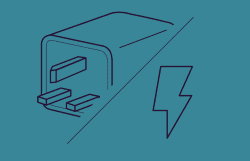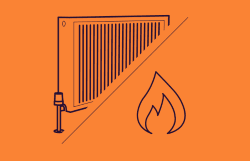Choosing the right energy contract for your home can be a daunting task, especially with so many options available. From fixed-rate plans to variable tariffs, the choices can be overwhelming. However, making the right decision is crucial, as your energy contract can have a significant impact on your monthly bills and the environment.
One factor to consider is the type of energy you use. While traditional energy sources like coal and gas are cheap, they come at a cost to the planet. As more people become aware of the effects of climate change in 2022, there has been a growing demand for green energy. Fortunately, many energy companies in the UK now offer green tariffs from renewable sources, such as wind and solar power, which are kinder to the environment.
In this article, we will explore the different types of energy contracts available, the benefits and drawbacks of each, why you may want to switch energy, and why you should consider paying more for green energy. By the end of this article, you will have a better understanding of the options available to you, and the steps you can take to reduce your carbon footprint while also saving money on your energy bills.
What is green energy?
Green energy (also going by renewable energy, green gas, green electricity, renewable electricity, renewable generation, renewable tariffs, etc.) is generated from natural resources that can be replenished or renewed, such as wind, sunlight, water, and biomass. Energy generators usually specify their green electricity tariffs. Unlike fossil fuels such as coal, oil, and gas, which are finite and non-renewable, renewable energy generation can be harnessed to generate electricity without depleting natural resources.
There are several types of energy from renewable sources, including solar power, wind power, hydro power, geothermal energy, and biomass energy. Solar power is generated by harnessing the sun’s energy through photovoltaic panels, while wind power is generated by using wind turbines to convert the kinetic energy of the wind into electricity. Hydro power is energy generated by using the energy of flowing water to turn turbines, and geothermal energy is generated by using the heat from the earth’s core to generate electricity. Biomass energy is generated by burning organic matter such as wood, crops, or waste materials to produce heat or electricity.
Green energy is seen as a more sustainable and environmentally friendly alternative to fossil fuels, as it produces little to no greenhouse gas emissions and helps to reduce carbon footprint. Many households and businesses are now choosing to switch to green energy suppliers in an effort to reduce their environmental impact and support the growth of the renewable energy industry.
In addition to being more environmentally friendly, switching your energy from your current supplier to a new supplier with green energy tariffs may also offer financial benefits to consumers, such as fixed prices, no exit fees, and discounts for direct debit payments. While green energy tariffs may sometimes be slightly more expensive than non-renewable tariffs, they may also help consumers to save money in the long term by reducing their energy consumption and reliance on non-renewable sources.
Does green energy cost more?
It is true that green energy, also known as renewable energy, can sometimes be more expensive than traditional fossil fuel-based energy sources. However, the cost difference has been decreasing over the years as renewable energy technologies become more efficient and cost-effective.
The initial investment costs for installing renewable energy technologies such as solar panels or wind turbines can be high, which is one of the reasons why green energy may be more expensive. However, it is important to note that the long-term cost savings from using renewable energy can be substantial. It is important to consider your energy use, current cost of energy, amount of energy required, and your type of energy supply. Renewable energy sources do not require fuel to generate electricity, which means that there are no ongoing fuel costs. Additionally, renewable energy sources have lower maintenance costs and longer lifespans than traditional fossil fuel-based energy sources, making them a more cost-effective choice in the long run.
Furthermore, many energy providers now offer green energy tariffs that are priced competitively with their traditional energy tariffs. In some cases, green energy tariffs may even be cheaper than traditional energy tariffs due to the decreasing cost of renewable energy technologies and the increasing demand for green energy. Additionally, the UK government offers various financial incentives such as the Feed-in Tariff scheme and the Renewable Heat Incentive to encourage the adoption of renewable energy technologies.
Overall, while green energy may cost more upfront, it can offer significant cost savings in the long run, and the cost difference is decreasing as renewable energy technologies become more advanced and accessible. Plus, choosing green energy can have positive environmental benefits, reducing your carbon footprint and helping to combat climate change.
What is the cheapest energy option?
When it comes to finding the cheapest energy option, it’s important to consider both the unit price of energy and the standing charges associated with each tariff. A tariff with a low unit price may have high standing charges, which could result in a higher overall bill. Similarly, a tariff with no standing charges may have a higher unit price, resulting in a higher bill for those who use more energy.
Fixed tariffs are often considered to be the cheapest option for those looking to save money on their energy bills. With a fixed rate tariff, you pay a set price for each unit of energy for a specified period of time, usually between one and three years. This means that if energy prices increase, you won’t be affected, and you’ll be protected from any price rises during the term of the contract.
Another way to save money on your energy bills is by switching to a supplier that offers a discount for paying by direct debit. Many suppliers offer this discount, which can be up to 10% off your bill.
Finally, it’s worth considering green energy tariffs as a potential cost-effective option. Renewable energy generators offering green sources could well beat your old supplier. While some green energy tariffs may be slightly more expensive than non-green tariffs, there are now many suppliers offering affordable green energy options. Additionally, if you’re eligible for certain government schemes, such as the Feed-in Tariff, you may be able to earn money back by generating your own renewable energy.
Ultimately, the cheapest energy option will depend on your individual circumstances, such as your energy usage, home size, and location. By comparing tariffs and considering all the options available to you, you can find the best deal for your needs and potentially save money on your energy bills.
How do I choose an energy provider?
Choosing an energy provider can be a daunting task, especially with so many options available in the UK market. However, it is important to take the time to research and compare different providers to find the best fit for your needs. Here are some key factors to consider when choosing an energy provider:
-
Tariffs: Compare different energy tariffs and choose the one that best suits your lifestyle and budget. Look for fixed-rate tariffs for more stable pricing, or variable tariffs for more flexibility.
-
Customer service: Check customer reviews and ratings of different providers to see how they handle queries, complaints, and other issues. Choose a provider with a good track record of customer service.
-
Energy mix: Look for providers with a high percentage of renewable energy sources in their energy mix if you’re concerned about the environment.
-
Payment options: Check whether the provider offers different payment options like direct debit, prepayment, or pay-as-you-go, and choose the one that works best for you.
-
Exit fees: Check for any exit fees or penalties for leaving your contract early, in case you need to switch providers in the future.
-
Additional services: Some energy providers offer additional services like boiler cover, energy-saving advice, and smart home technology. Consider whether these additional services are of value to you.
-
Price comparison: Use an online price comparison site to compare different providers and tariffs based on your specific energy usage.
In summary, choosing an energy provider requires a bit of research and consideration of your personal needs and preferences. By taking the time to compare different providers and tariffs, you can find the best fit for your lifestyle and budget.
What is the safest energy?
If we consider safety in terms of environmental impact and health hazards, then renewable energy sources like wind, solar, and hydropower can be considered the safest energy options.
Renewable energy sources are considered safe because they produce little to no emissions that contribute to climate change, air pollution, or water pollution. They also don’t pose the same risks of accidents or disasters that are associated with traditional energy sources like nuclear or fossil fuels.
In contrast, nuclear power plants pose a risk of radiation leaks or accidents, which can have serious health and environmental consequences. Fossil fuels like coal, oil, and natural gas contribute to air pollution, greenhouse gas emissions, and can cause health problems for people living near extraction sites or power plants.
Renewable energy sources also offer the potential for decentralized power generation, which means that individuals and communities can generate their own energy and reduce their reliance on large centralized power plants. This can increase energy independence and reduce the risk of power outages or disruptions.
In summary, while there is no single “safest” energy source, renewable energy sources like wind, solar, and hydropower are generally considered the safest options when it comes to environmental impact and health hazards.
How do I get the best energy prices?
Getting the best energy prices for your home or business is not as complicated as it may seem. There are several steps you can take to ensure that you’re getting the best deals on your energy bills.
Firstly, it’s essential to shop around and compare prices from different energy providers. Websites such as Compare the Market, MoneySuperMarket, and Uswitch offer free and easy-to-use comparison tools that can help you find the best deals available. Make sure to compare both fixed and variable tariff options as well as different types of contracts, including green energy options.
It’s also worth checking if your current energy supplier offers any loyalty or referral schemes that can help you save money on your energy bills. Many providers offer incentives for customers who refer friends or family to their services or have been with them for an extended period.
Another way to save money on energy bills is by using energy-saving appliances and practices. Investing in energy-efficient light bulbs, smart thermostats, and appliances with high energy efficiency ratings can help reduce your overall energy consumption and, in turn, lower your bills.
You could also benefit from working with an energy broker.
Furthermore, it’s essential to regularly review your energy bills and usage to identify areas where you can reduce your energy consumption. Simple practices such as turning off lights and unplugging appliances when not in use can help lower your energy usage and save you money.
Finally, consider paying your energy bills via direct debit, as many providers offer discounts for customers who opt for this payment method.
In summary, by shopping around and comparing prices, using energy-efficient appliances and practices, regularly reviewing your energy bills, and paying via direct debit, you can ensure that you’re getting the best energy prices and saving money on your bills.




